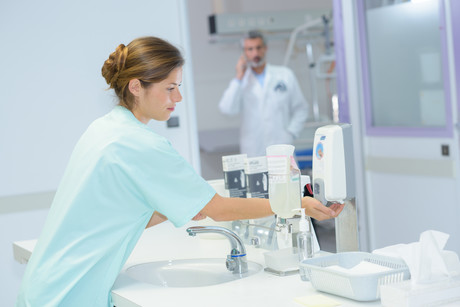Antimicrobial resistance remains a threat in Aus hospitals
Friday, 10 August, 2018

The latest six-monthly report for the National Alert System for Critical Antimicrobial Resistance (CARAlert), released by the , highlights the continuing threat of antimicrobial resistance by dangerous bacteria.
Carbapenemase-producing Enterobacteriaceae (also known as CPE) and Neisseria gonorrhoeae continue to be the most commonly reported organisms with critical resistances to antimicrobials across Australia, according to the report. CPE is a Gram-negative bacteria that is routinely encountered in hospitals and other healthcare facilities, while N. gonorrhoeae is a bacterial sexually transmitted infection.
“The finding that CPE remains prevalent in Australian hospitals is concerning,” said the Commission’s Senior Medical Advisor for the AURA Surveillance System, Professor John Turnidge. “This group of bacteria has the ability to cause common infections, has limited treatment options and can have a death rate as high as 50% for bloodstream infections.
“These bacteria do not discriminate. The latest report shows that few age groups are spared, including our youngest Australians — children aged up to four years.
“As CPE are becoming commonplace across various hospital settings in Australia, clinicians need to be aware of the patient populations at risk to limit spread to other patients. Should infection occur, they should seek specialist advice to deliver appropriate treatments.”
The continued volume of CPE reports (255 in the six months to 31 March 2018) highlights the importance of effective infection prevention and control to help combat the threat of antimicrobial resistance. With this in mind, the commission has published guidelines to help acute health facilities control the further spread of this infection and has strengthened efforts to improve and reduce antimicrobial use — for example, through antimicrobial stewardship programs in healthcare settings.
Outside of the hospital environment, the report makes reference to the continued high number of alerts for resistance in N. gonorrhoeae. For the first time, two extensively drug-resistant (XDR) N. gonorrhoeae infections have been reported in Australia, following a report in the UK of a similar strain. These infections are unable to be treated with the recommended treatments of ceftriaxone and azithromycin. A further five strains have high-level azithromycin resistance alone.
The detection of these strains is concerning because of the potential for N. gonorrhoeae to cause a community outbreak of sexually transmitted infections. While reports of low-level resistance to azithromycin in N. gonorrhoeae have decreased by 26% since the last six-monthly report, they still account for more than one-third (38%) of all CARAlerts.
“To prevent sexually transmitted infections (STIs), either to yourself or others, it is best to practice safe sex,” said Prof Turnidge. “Safe sex includes using a condom or dental dam to ensure that you do not pass an infection on to your partner.”
The report also indicates an increase in the multidrug-resistant Shigella species — an infection associated with foodborne illness, particularly in people returning from overseas travel in developing countries. Prof Turnidge noted, “Clinicians in the community should be aware of risk factors for highly resistant community infections, including overseas travel.”
CARAlert was established by the commission in 2016 to monitor and report on cases of bacteria resistant to critically important antimicrobials which are considered to be a serious threat to the effectiveness of last-line antimicrobial agents. As explained by Prof Turnidge, “Knowing which new bacteria are emerging as potential threats allows us to take the initiative in the fight against antimicrobial resistance.”
In total, 653 critical antimicrobial resistances (CARs) were reported by 58 participating laboratories between October 2017 and 31 March 2018, a number similar to the same period in the previous year (October 2016 to March 2017). 48% of CARs were detected from patients attending hospitals.
At least one strain of bacteria with some type of CAR was reported from each state and territory, with the three most populous states accounting for 87% of cases: NSW (32%), Victoria (34%) and Queensland (21%). The lowest numbers of CARs were reported from Tasmania (five), the Northern Territory (four) and South Australia (one).
“The commission is collaborating with states and territories to establish a network to coordinate responses to outbreaks of resistant organisms in Australia,” said Prof Turnidge. “The timely data that CARAlert provides is a key resource to inform these responses.”
This report is available on the commission’s .
$12m for homegrown heart disease and diabetes innovations
$12 million in federal funding has been announced for the development of new Australian-made...
National cancer screening program marks first in almost 20 years
From 1 July, the National Lung Cancer Screening Program will commence — marking the first...
Doctor deregistered after botched facelift calls for ambulance
A Queensland doctor has been deregistered after a botched cosmetic surgery procedure left a...





